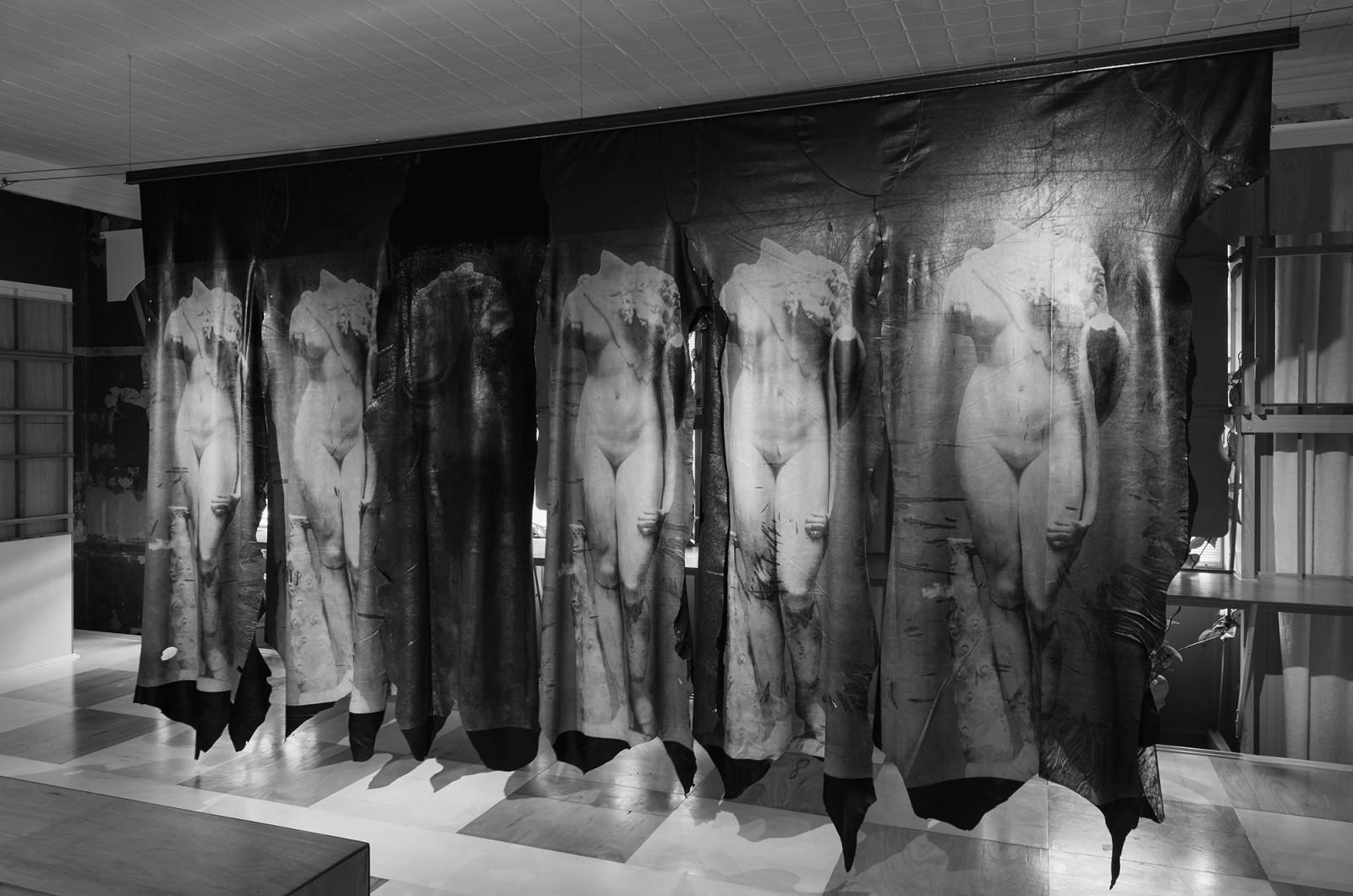Suspicious Marble (Omphale): 2017
hand printed screen-prints printed front and back of six leather hides
metallic foil, white ink, mild steel
210 x 397 cm
A melding of sculpture and photography, this leather screen takes as its point of departure two small, late 19th century, photographs that represent a marble statue of Omphale, a woman largely ignored within existing frameworks classical Graeco-Roman scholarship.
Very little is known of this mysterious, powerful queen of the iron age kingdom of Lydia (contemporary western Turkiye). Most of what is known comes down to us through Greek mythology wherein the story most often associated with her revolves around Herakles’ enslavement to her in an act of atonement for killing his friend Iphitus. During the enslavement Omphale demands an exchange of their garments and a transposition of widely perceived gendered roles.
Here Omphale’s identity is attested by the fact that she is represented wearing the classical attributes of Herakles - his lion skin cape and his olive-wood club.
Common to all known versions of the narrative, during his enslavement the hyper-masculine hero is required to wear womens clothing and to undertake womens work (like spinning wool), while Omphale, wearing his Nemean lion skin, takes possession of his olivewood club and engages in men’s activities such as hunting.

Although the narrative is well represented in ancient literary sources, little ancient material culture associated with it survives. However, there is a brief period in the evloutionary history of Roman sculpture (during the transition from Republic to Empire), in which we see wealthy Roman women responding to their evolving legal, economic, and social status by commissioning portraits of themselves in the style of Omphale.
After this brief appearance, Omphale disappears again before emerging (albeit briefly) in 19th century European musical, sculptural and decorative arts contexts.
Suspicious Marble (Omphale) considers relations between power, presence, agency and control, while refering to the fluid nature of gender-based identity. Alongside these conceptual concerns, in this work I explore a lonstanding theme in my practice, being the relationships between the materiality of things, the body and remembering.
The two archival photographic images reimagined in this artwork represent a manifestation (in stone) of soft human skin, around which is swathed the skin of another animal. By rescaling the original images to approximate human dimensions, and printing them onto the skins of other animals, I have endeavoured to establish a framework to help us understand how materials help us to make meaning of things, and the roles that our bodies play in generating and apprehending meaning.
Presenting skin as both subject and object, I point toward the contemporay archaeological theory Material Enagement Theory, specifical the concept of material semiosis, wherein a material’s meaning emerges from the conceptual blending of one’s physical and mental responses to it during context-specific engagements with it.
For more information on Suspicious Marble (Omphale) in relation to Material Engagement Theory, see my essay From Limbo To Mashup and The Spell Of The Fake: Relating Contemporary Photographic Practice, The Photographic Archive and Material Engagement Theory which can be downloaded here